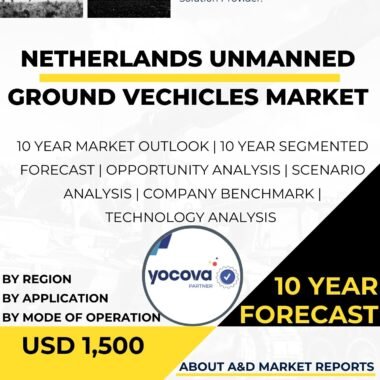Description
Australia Unmanned Ground Vehicles Market
1. Advancements in Military Technology
One major factor boosting the Australia unmanned ground vechicles market is the strong push for advanced defense technology. UGVs reduce human involvement in dangerous environments. They support missions in high-risk zones and help complete tasks more safely and efficiently.
2. Strategic Defense Partnerships
Australia’s defense partnerships have significantly supported the growth of UGV adoption. Collaboration with allies such as the United States and other Indo-Pacific nations gives Australia access to advanced UGV technologies. These partnerships also ensure smooth interoperability during joint operations.
3. Suitability for Australia’s Challenging Terrain
Australia has vast, rugged, and diverse terrain. Many regions are difficult for soldiers to reach or navigate. UGVs perform well in deserts, jungles, remote areas, and urban settings. This capability helps the Australian Defence Force (ADF) maintain situational awareness and complete missions more effectively.
Growing Importance of UGVs in Military Operations
4. Reduced Risk to Military Personnel
A key advantage of UGVs is their ability to handle dangerous tasks without exposing soldiers to harm. As the ADF continues to prioritize reducing casualties, UGVs provide a safer and more efficient alternative.
5. Integration of AI and Robotics
Artificial intelligence has transformed the Australia unmanned ground vehicles market. AI-powered UGVs navigate autonomously, adapt to changing conditions, and make decisions using real-time data. This increases their operational value on complex battlefields.
Indigenous Development and Industry Growth
6. Local Production and Innovation
Australia has invested heavily in developing indigenous UGVs. Local manufacturing reduces dependence on foreign suppliers and supports domestic industry growth. These efforts also ensure that UGVs meet Australia’s unique operational requirements.
7. Cost-Effective Defense Solutions
UGVs help the defense force reduce long-term operational costs. They can perform tasks faster, more safely, and with fewer resources. This efficiency makes UGVs a valuable asset for budget-conscious defense planning.
Expanding Military and Non-Combat Applications
8. Logistics and Support Operations
The use of UGVs goes beyond combat. They are increasingly used to transport supplies, ammunition, and equipment across the battlefield. This improves mobility and strengthens supply chain efficiency during missions.
9. Border Security and Emergency Response
Australia’s strategic location makes UGVs useful for border patrol, counter-terrorism operations, and disaster response activities. Their versatility supports national security and humanitarian efforts.
Future Outlook for the Australia Unmanned Ground Vehicles Market
Continuous advancements in UGV technology are shaping the future of the Australia unmanned ground vehicles market. As demand increases, Australia is positioning itself as a leader in unmanned defense systems. The strategic integration of UGVs enhances military performance, supports innovation, and ensures a strong defense posture in an evolving security environment.




